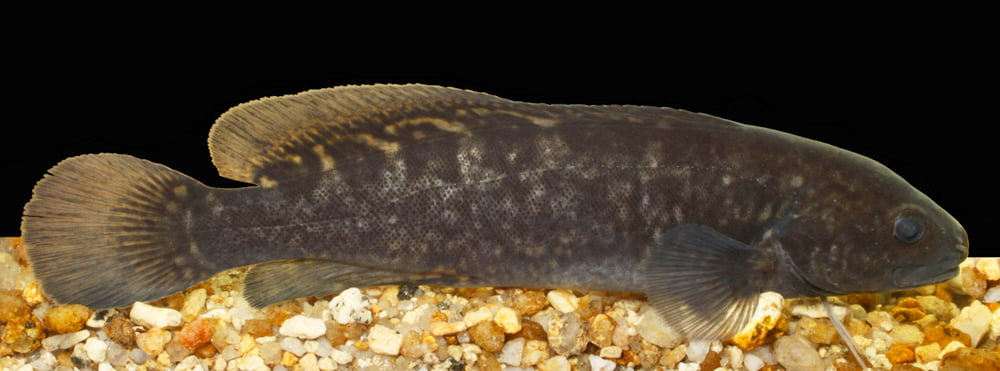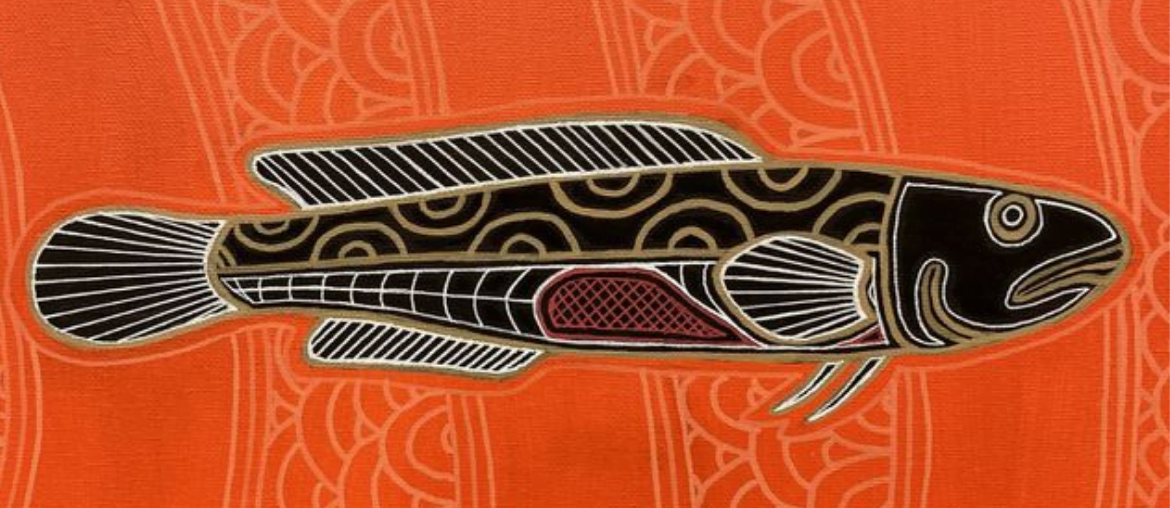How does a cold water specialist fish survive in Queensland? And why is it known as a ‘Canary in the coalmine’? There is a special fish – the River blackfish – that calls the Condamine headwaters in southern Queensland its home. This region is unique in Queensland as it has stretches of cold water that are home to unique fish species. The Condamine River and its headwaters start their journey in the ‘Main Range Group’, a mountainous subtropical rainforest, where the River blackfish is found. The fish species is well-known and loved by locals.
The River blackfish is native to the Murray Darling Basin and lives throughout south-eastern Australia, with its habitat stretching from Tasmania, South Australia and Victoria, through New South Wales and into the southern reaches of Queensland in the Condamine headwaters – which are the headwaters of the entire Murray-Darling Basin. Blackfish are coldwater specialists, which is why you will only find them in altitudes above 600 metres in Queensland.

The species has, however, a very limited migration, and a population rarely moves beyond a 25-metre habitat range for most of its life, which makes them good indicators of the health of the ecosystems and of the river they live in. Associations between river health and migratory fish, such as the famous Murray cod, may be ‘fuzzier’ or harder to link as they can move to areas with better resources. It is for this reason that the River blackfish has been described as the Condamine’s ‘canary in the coal mine’, as the decline of blackfish numbers in the region could be warning us that the health of their habitats and rivers are in decline.
A bit more about Blackfish
There are two known species of blackfish in Australia, Gadopsis bispinosus and Gadopsis marmoratus. G. marmoratus is the only species found in Queensland, as it thrives in environments above 600 metres. These two species primarily differ based on their dorsal fins, with G. bispinosus deriving its names from its characteristic two dorsal spines, whilst G. marmoratus can have between six and 13 dorsal spines.


River blackfish, who once thrived across the entire Murray Darling Basin, are now facing declining population numbers due to several threats to their habitats. At least one localised extinction of a blackfish population has occurred in the Condamine’s headwaters since 2014. Scientists and local land managers were concerned about these falling populations and wanted to know why this happened. Their studies found that the river’s habitat was no longer a healthy environment for blackfish to survive, particularly due to low water flows, high water temperatures, and habitat destruction.
What do River blackfish need to thrive?
Blackfish rely on their habitat having clear, cool flowing streams and deep pool habitats where they can breed. They lay their eggs under rocks, boulders or woody debris (so snags and fallen logs are an essential part of their habitat). River blackfish are typically found in dark places, such as undercut banks, logs and rocks. Temperatures above 28 degrees celsius are lethal for blackfish and other cold-water specialists, including the declining Mountain galaxias and the critically endangered Spiny crayfish who also call the headwaters home.
Changes in the local environment have significantly altered the Condamine River. Like elsewhere across the entire Basin, historical land clearing practices released sediment that run off into waterways, smothering and infilling the deep and cold pool habitats that are essential for blackfish survival. It’s been proven that riparian cover, and thus cooler water, is associated with successful blackfish breeding. However, increasing average temperatures, combined with vegetation clearing in riparian zones (the banks of a river) and declining canopy cover, mean the outlook for blackfish isn’t good.
Researchers also found that cattle were placing pressure on waterways, by trampling banks and polluting waterways with their faeces and sediment. This makes stock management (managing cattle access to waterways) essential to restoring the blackfish’s habitat.
What are we doing to help the River blackfish?
Through the Native Fish Recovery Strategy, a team of researchers and land managers have been undertaking works in the Condamine to restore the river to a healthy condition and increase fish populations. This has involved engaging with local farmers and landholders to keep stock out of waterways through plans for fencing, offstream watering and stream crossings, as well as revegetation to reduce sedimentation, and reintroducing habitat structures where blackfish are still found.
Land managers are taking on-ground works with enthusiasm, and the wider community has shown great interest and support for the initiative. We are hopeful that with these recovery actions underway, the species will be able to bounce back to its original population size and range. We are hoping that the River blackfish can lose its ‘canary’ status – surviving and thriving as part of a healthy river ecosystem.
The work in the Condamine demonstrates the importance of protecting native fish species as they are a good indication of the health of an ecosystem. We need these species to restore rivers and preserve Australia’s incredible biodiversity so that fish like the River blackfish do not become further threatened (or canaries!).
Further Information
To find out more about River blackfish, hear from the Upper Condamine’s Native Fish Recovery Strategy coordinator Jacinta Cox.
Featured image: Painting of a River blackfish by artist Nathan Charles. The orange colour is used as a warning sign, representing the species’ status as the ‘canary in the coal mine’. Source: Nathan Charles.




